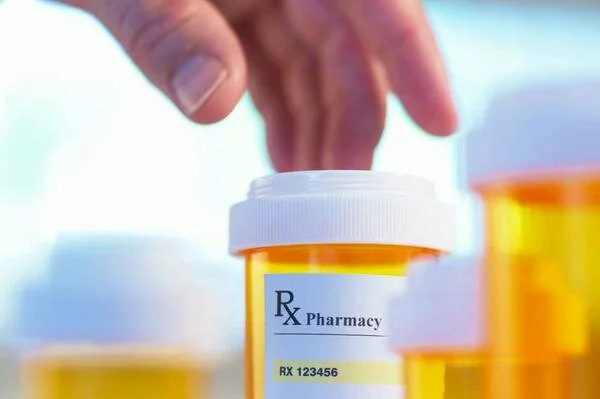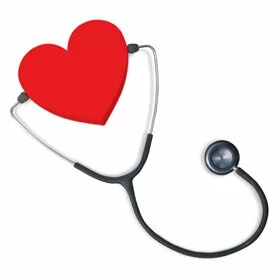How to Travel With Prescription Medication
Packing for a trip can be a daunting task – especially if prescription medications are on your list of travel essentials. Maybe you aren’t sure how much to bring or perhaps you have certain prescription medications that require refrigeration or other special accommodations. Not to worry! We’re going to show you how to travel with prescription medication with tips that will ensure both the safety and integrity of your medication during the trip as well as your peace of mind.
Keep it close and keep it safe
When packing for your trip and planning how to travel with prescription medication, leave enough room in your carry on bags. Having your medication close at hand will ensure that you are able to locate and access it when you need it as well as safeguard against it being lost or stolen during transitions.
Have an extra week’s supply on hand
You never know what will happen during your trip so being prepared when traveling with prescription medication is imperative. Discuss your travel plans with your doctor and secure an extra week’s supply of any prescription medication you may have. Having an additional supply on hand will provide a safety net in case some of your medications are lost, stolen or destroyed – or in the event that you are gone longer than you intended to be.
Keep a written log of important information
Before you leave on your trip, write down everything there is to know about your medications, including the name of the medication, the dosage, the time table of when you take it, the condition its meant to treat, the prescribing physician and pharmacy as well as their contact information. You may also want to include whether the medication you are traveling with is the generic or brand name form as well. If possible, get an additional prescription from your doctor just in case you need to have it filled again while you are away. Keep this log with your medication at all times.
Know the rules and regulations beforehand
When planning how to travel with prescription medication, take into consideration your travel plans as well as your destination. Some airlines have strict restrictions against traveling with liquids and other materials they deem to be hazardous. They may also have special labeling requirements that must be followed as well.
If your travel plans include visiting other countries, educate yourselves on their laws regarding the importation of prescription medication and make sure you follow them to the letter. Failing to do so could result in your medication being confiscated, fines or possibly jail time.
Special considerations
If you have diabetes or a similar condition that requires monitoring at certain intervals or additional medical supplies for meters or other medical equipment, be sure that you pack twice as much as you expect to use during the time you are away. Remember to include extra batteries, testing strips and related items to ensure you are able to keep up with your routine. Some medications may need refrigeration so its very important to be aware of this and plan accordingly to accommodate those types of prescription medications. Don’t forget to include any and all relevant information to these special conditions in the medication log you made earlier.
At eDrugSearch, we pride ourselves on bringing you important up to date prescription medication news and information. We offer a free, easy to use database where consumers can compare the prices of prescription medications from the comfort of their own homes – any time of the day or night. eDrugSearch also provides safe access to affordable medications at a savings of up to 80% off retail prices.
About this Angie’s List Expert: Cary Byrd is the president and founder of eDrugSearch.com. Based in San Antonio, eDrugSearch.com is a free cost comparison engine that helps consumers get safe access to affordable medications and advocates licensed online pharmacies as a widely accepted alternative.
When childproofing their home, most parents know to keep medications out of their child’s reach. However, many accidental poisonings still occur every year despite parental precautions, and the majority of these emergency room visits are related to medications that a child got into when a parent or caregiver was not looking. Therefore, it is important for every parent to pay attention to these new tips regarding medication safety tips for kids so they can ensure their child is safe from the threat of an accidental poisoning.
Store Medications Out of Sight
For most children, out of sight does mean out of mind. Therefore, one of the best steps parents can take to prevent an accidental poisoning is to store all medications out of their child’s sight. Ideally, this storage space should be in a high cabinet in a room in which children have limited access such as a master bathroom or the kitchen.
Lock it Up
Simply storing medications out of sight may not be enough to deter a curious child. In fact, knowing that a cabinet is forbidden may pique a child’s curiosity. Parents of climbers should especially be aware that a high cabinet may not stop a child from climbing on countertops of pulling out a ladder. Therefore, installing a childproof lock on any cabinets with medication can ensure that little hands will never get a hold of dangerous medications.
Check Purses and Bags
When checking their home to make sure it complies with medication safety tips for kids guidelines, many parents forget to check their purses and bags. However, most adults keep some type of medication in their purse for pain relief or to treat a health condition. Because children love to explore the items in a person’s bag or purse left unattended for even a moment, this can set the stage for an accidental poisoning. When entertaining guests, parents should always provide a safe place for them to store their belongings to avoid children coming across medication that a parent may not even be aware is in their home.
Watch for Overlooked Medications
Many commonly used items are overlooked as medications, yet they can be just as dangerous as a prescription drug if ingested by a child. Therefore, parents should scan their home environment to determine if there are any over-the-counter medications within their child’s reach. Diaper rash creams, eye drops and teething gel are a few of the most common medications that are often viewed as innocuous. However, each one of these should be treated with the same high level of caution as prescription medications.
Be a Vigilant Visitor
When visiting family and friends, parents may need to educate their loved ones regarding medication safety for kids. Often, those who are not accustomed to having children in their home may not have childproofed their medication storage areas. This is especially a concern for children who visit their grandparents because many older adults take prescription medications that may not always have childproof caps. Therefore, parents should ask about any medications that are in the house and keep an eye out for any that may have been left out.
Practice Proper Dosing
Parents can begin teaching young children about medication safety by setting a good example. Always explain to children that they are taking medication and what it is being used to treat. Then, parents should always use the proper dosing procedures for that specific medication. Ideally, the dosing device that is packaged with the medication is the best way to administer medication. Although a medication may state to use a tablespoon, it is important to note that kitchen spoons can vary widely.
Be Careful with Disposal
While most parents are careful to lock up new medications, it is common for them to forget to dispose of medicine properly. Often, they will discard expired or unnecessary medications by simply tossing them in the trash. However, the prospect of finding something new can lead a child to pick up medicine out of the trash can. To prevent this from occurring, parents should always dispose of their medication in a way that will limit their child’s access.
Know the Number for Poison Control
Even with the best of precautions, it is always possible that a child might experience a medication mishap. Therefore, it is essential to have the number for poison control listed in an easy-to-find location in the home such as the kitchen or by the phone. Then, a parent or caregiver can call 1-800-222-1222 for help at the first suspicion that a child may have inadvertently taken medication.
Medication safety tips for kids is an essential component of any childproofing plan. Whether a child is at home or visiting a loved one, it is important for parents and caregivers to keep medications out of their reach. By focusing on keeping medications in a locked and inaccessible location and teaching children about the importance of medication safe, accidental poisonings can be prevented to ensure the health and safety of children.
About this Angie’s List Expert: Cary Byrd is the president and founder of eDrugSearch.com. Based in San Antonio, eDrugSearch.com is a free cost comparison engine that helps consumers get safe access to affordable medications and advocates licensed online pharmacies as a widely accepted alternative.
Trying to save on the costs of prescription medicines is a challenge that many people face. Buying medicines from Canada is a way to save money, but is it illegal to buy medicine from Canada? The savings can equal hundreds of dollars for Americans when buying from licensed, online pharmacies in Canada if you do a little research before making your purchase.
What to Know
The official answer to whether or not it is legal to buy Canadian medications through an online pharmacy and have them shipped into the United States is no, it isn’t legal. The reality is that most enforcement agencies are willing to allow American citizen to order several months worth of medications as long as the prescriptions aren’t highly controlled within the United States. For example, most enforcement agencies will allow you to order several months worth of cholesterol controlling medications, but don’t allow prescription narcotics (controlled substances) to be shipped across the border.
The official stance of the federal agency in charge of regulating incoming prescription medications and enforcing the Prescription Drug Marketing Act of 1987 is that a three month supply of most medications can be shipped into the country and the agency will not take any action. The limited resources and manpower available to the agency make controlling small shipments of medications for personal use very challenging, which has resulted in this look-the-other-way policy. The FDA currently uses the resources available to control large, unauthorized shipments of medications that enter the country rather than small, personal shipments of medications.
Ordering Online
If you have been wondering is it illegal to buy medicine from Canada, you have also considered the benefits of ordering your medications from an international pharmacy. Prescription medications from Canada are the same quality as those from America, but cost significantly less than buying from a local American pharmacy. Canadian pharmacies that ship into the United States are also willing to resend any rejected packages that are returned by the customs agents in the states. With 99% of medications reaching the customer without any problems, this occurrence is very rare.
Ordering online is convenient and safe when buying from a reliable pharmacy. Canadian prescription medications are regulated for consistent quality, just as American pharmacies, making them a much safer alternative then ordering from some other international locations. Look for a pharmacy that is licensed and that has an address in Canada to get the best medications for your money. Some Canadian pharmacies will require you send in a written prescription for your medications before shipping your order. If you spend a lot of money on medicines each month, this simple step can save you money on your medications month after month.
Saving on Medicines
The comparisons between Canadian and American pharmacies are shocking to those taking prescription medications. A standard one month supply of Tamoxifen, a drug that is used to treat cancer, is nearly three hundred dollars in America, but less than fifty dollars when purchased from a Canadian pharmacy online. Most Canadian pharmacies offer expedited shipping options and free shipping options in addition to charging much less for medications, allowing you to save even more on your prescriptions each month. When wondering is it illegal to buy medicine from Canada, the answer is that you can easily buy your medicines for less without worry about being prosecuted.

About this Angie’s List Expert: Cary Byrd is the president and founder of eDrugSearch.com. Based in San Antonio, eDrugSearch.com is a free cost comparison engine that helps consumers get safe access to affordable medications and advocates licensed online pharmacies as a widely accepted alternative.
As a person ages, they frequently begin to require more medications to manage their medical conditions and maintain their physical health. Currently, over two-thirds of adults over the age of 65 take at least one or more types of medications a day. Additionally, many of these seniors take more than three medications at varying times each day. This increased use of medications places seniors at risk for serious problems such as drug interactions and missed doses. If you are currently taking any type of medication, then our Safe Medication Use for Seniors is a critical list of what you need to know about communicating with your physician and pharmacy to stay safe and protect your health from medication mistakes.
Read Labels and Inserts
The more that you know about your medication, the less likely you will be to make a mistake. Take the time to carefully read each one of your medication labels and inserts to practice. Most pharmacies also include a patient education center in which a pharmacist can educate you about any new medications you are taking. By learning as much as you can about safe medication use for seniors, you will be able to identify potential problems before they can take place.
Inform Doctors About All Medications
When talking to their doctor, many people forget to mention every medication they take each day. Unfortunately, this raises the risk of serious drug interactions. Even herbal supplements, vitamins and over-the-counter remedies should be mentioned because many of these can significantly alter the effect of prescription medications. If you have trouble remembering all of your medications, then make a list to take with you on your next scheduled appointment that can help you discuss safe medication use for seniors.
Record Side Effects
Anytime you begin taking a new medication, remain alert for potential side effects. It is also important to remember that side effects can develop even after you have taken a medication for some time. When side effects occur, make a note of when they begin and how they make you feel. This handy reference can aid your physician in assisting you with managing the side effects from your medication while helping to identify serious problems with a specific medication.
Use Medication Reminders
Keeping track of your medications is basic safe medication use for seniors that can be made easier by using memory aids such as pill organizers, alarms, and rx reminders. When you use a pill organizer, you can tell with only a glance whether or not you have taken your medication. Additionally, scheduled alarms can alert you when it is time to take your next dose. There are even free iPhone and Android apps along with online reminder services that can scheduled your medication reminders by SMS, email, or phone.
Keep Medicine Away from Children
Although your children may be grown and out of the house, you should still keep your medication in a safe place. By storing your medications in a locked cabinet or using childproofed containers, you can be certain that your grandchildren will always be safe when they come to visit.
Ask Questions
At some point, you will most likely have a few questions about a medication you are taking. Do not hesitate to contact your pharmacist, physician or a reputable medical website to learn more about safe medication use for seniors. By asking questions, you can take charge of your health while staying informed about the safety of the medications you take each day.

About this Angie’s List Expert: Cary Byrd is the president and founder of eDrugSearch.com. Based in San Antonio, eDrugSearch.com is a free cost comparison engine that helps consumers get safe access to affordable medications and advocates licensed online pharmacies as a widely accepted alternative.
According to a report from Reuters, taking ginkgo biloba, St. John’s wort and several other widely used herbal medications may impede the potency of prescription drugs, making them more or less effective.
Experts at the Journal of the American College of Cardiology found that mixing herbs and drugs also may cause serious heart rhythm problems and bleeding.
“We can see the effect of some of these herb-drug interactions — some of which can be life-threatening — on tests for blood clotting, liver enzymes and, with some medications, on electrocardiogram,” Dr. Arshad Jahangir of the Mayo Clinic in Arizona said in a telephone interview.
Many patients fail to disclose their use of herbal remedies so healthcare providers should be more probing, Jahangir said in a telephone interview.
“We need to be actively ask about alternative or complementary medicine patients may be seeking on their own to assess these potential interactions or side affects,” said Jahangir, a cardiologist.
“They don’t even consider that herbs could have a negative effect,” he said. “Their impression is that ‘natural’ is safe,”
So whether you use an ACE inhibitor like Vasotec or Monopril, alpha agonists like Zanaflex, or angiotensin II receptor blockers like Avapro or Atacand, it is a good idea to check with you doctor and make sure there won’t be an interaction with any of the additional supplements you may be taking.
Remember, whenever dealing with potential interactions between medicines and supplements, it is always better to error on the side of caution.
Better safe than sorry.

Earlier this month, a closely-watched trial over the osteoporosis drug Fosamax ended in mistrial, to the frustration of nearly everyone involved. The trial was marked by great tension, with a deadlocked jury, reports of threats of physical violence, and a judge-ordered cooling-down period.
What could cause such intense drama? Well, this was just one of approximately 900 state and federal cases pending against Fosamax, alleging that that medication causes osteonecrosis of the jaw (the death of jawbone tissue). In large part, the tension in the Manhattan courtroom was that this trial — the first — was supposed to be an indicator of how these hundreds of similar cases might proceed. The other major factor is that it is notoriously difficult to “prove†drug-related injuries, and this difficulty was definitely shown in the frustration and tension among jury members.
Millions of women have taken Fosamax (alendronate), a Merck drug that was approved in 1995 to treat osteoporosis associated with menopause, and in 1997 to prevent osteoporosis itself. Until the recent introduction of some competing medications, it was one of the most popular drugs in the U.S. It is still prescribed millions of times per year to women suffering from bone loss.
In short, Merck’s defense on this topic is that there is no definitive evidence that Fosamax causes the death of jaw tissue, while plaintiffs and their lawyers insist that Merck overpromoted Fosamax without warning doctors about the potential for jaw injury. Obviously, no conclusions were reached.
Of course, this is of great interest to women who may have taken, or are considering taking, Fosamax. Only your doctor can decide what is the right choice for you, but we thought we would enumerate the other medications available for treating osteoporosis for those doing research on Fosamax alternatives. One very important thing to be aware of it is that Fosamax is not the only osteoporosis drug in this class (the bisphosphonates), which all have a similar mode of action. Fosamax is being talked about most in the media, but all are associated with some amount of risk of damaging the jaw.
If you do choose to take a bisphophonate, know these facts:
- A high proportion of jaw injuries occur following high-dose intravenous administration, so that is a particularly risky way to take the medication.
- As many as 60% of the cases are preceded by a dental surgical procedure involving the jaw. In short, women who are expecting major dental work should consider delaying treatment with Fosamax, Boniva, Actonel or similar drugs until after their dental surgery.
Here are the main alternatives on the market for Fosamax:
- Actonel (risedronate) is a bisphosphonate manufactured and marketed by Procter & Gamble and Sanofi-Aventis. It belongs to the same family of drugs as Fosamax, and may be associated with the same jaw side effects.
- Boniva (ibandronate) is also a bisphosphonate, manufactured and marketed by GlaxoSmithKline and Roche Laboratories. It is a competitor to Fosamax, and may also affect the jaw tissue.
- Evista (raloxifene) is NOT a bisphosphonate , but rather an oral selective estrogen receptor modulator from Eli Lilly and Company that affects bones through estrogen. Evista may be an interesting alternative for women concerned about their jaw health or planning oral surgery.
Also this month, The Wall Street Journal published an article called “From the Osteoporosis Front, Updates on Potential New Drugs.†These are the up-and-comers in clinical trials and going before the FDA. The story covers the latest news about Wyeth’s Viviant, Pfizer’s Fablyn, Amgen’s denosumab, and other upcoming treatments for osteoporosis.
If you are interested in following the Fosamax case that ended in a mistrial, it is expected to be re-tried in the spring. The name of the case is “In re Fosamax Products Liability Litigation, U.S. District Court, Southern District of New York (Manhattan), No. 06-1789.”

It hadn’t really occurred to me, until I read a great rant by Jen Huntley in the Reno News & Review the other day, just how completely the web of Big Pharma envelops our lives.
In other words, Big Pharma doesn’t just provide us drugs when we get sick. Big Pharma also helps us get sick in the first place. It’s the perfect racket: they’ve got us coming and going.
As Jen writes:
While those of us with adequate or good health insurance looked the other way, health care became a giant profit-making machine for insurance companies and hospitals—but the pharmaceutical industry really takes the cake.
Not only have they bought the government with profits built on taxpayer subsidies, but other reports also reveal the enormous role of drug companies on our food supply. Seventy percent of all antibiotics are fed to livestock to keep them alive long enough to reach market weight in crammed feeding lots. As Prevention magazine reported last month, the superbug MRSA—a deadly, drug-resistant form of staph—is now present in our food supply.
Great. Taxpayer-subsidized drugs in our food make us sick—we go to the hospital and get fed more drugs. With its vast and powerful lobbying system, the pharmaceutical industry writes both agricultural and medical policy to feed its own bottom line. [emphasis added]
Just how serious is the MRSA threat created by the overuse of antibiotics in pigs and other livestock? Chances are, we won’t find out until it’s too late. Here’s an excerpt from an MSNBC.com report:
Until recently, the CDC has acknowledged the presence of MRSA in meat but downplayed the danger … One reason the CDC and the National Pork Board must guess about transmission rates — and why we don’t know exactly how many MRSA-related infections occur — is that the federal government doesn’t collect data on MRSA outbreaks, says Karen Steuer, director of government operations for the Pew Environment Group. According to the US Government Accountability Office, there’s no testing for MRSA on farms. And the National Antimicrobial Resistance Monitoring System tests just 400 retail cuts of meat each month for four drug-resistant bacteria — which don’t include MRSA.
And yet, according to Food Poison Journal, recently published research shows MRSA was present in nearly half of pigs in a study of U.S. pig farms.
Fortunately, Congress finally appears to be taking action against the overuse of antibiotics in farm animals. The FDA is recommending the following actions, which have been endorsed by the AMA (but opposed by the National Pork Producers Council, among others) –
- Phasing out and banning the use of antimicrobials for non-therapeutic (i.e. growth promoting) use in food animals.
- Immediately banning any new approvals of antimicrobials for non-therapeutic uses in food animals and retroactively investigating antimicrobials previously approved.
- Strengthening recommendations in FDA Guidance #152 which requires the FDA determine that the drug is safe and effective for its intended use in the animal prior to approving an antimicrobial for a new animal drug application.
- Facilitating the reduction in industrial farm animal production use of antibiotics and educating producers on how to raise food animals without using non-therapeutic antibiotics.
We’ll see if this recommendation goes through … or if it dies on the vine like Canadian drug reimportation and other measures popular with the public, but unpopular with powerful vested interests.
Think about what will happen if MRSA continues to spread from hospitals — where it currently is at dangerous levels — into the general population. It will actually solve some big problems for Big Pharma.
As we’ve reported here before, a number of supermarket chains and other retailers are now giving away common antibiotics for free. The reason is that patents on these drugs have long since expired, so the prices for these drugs are very low. It’s worth it to the retailers to give them away in order to get you into their stores.
I have a friend who recently acquired an infection caused by MRSA, which as we know is not treatable by those “free antibiotics.”
He had to purchase a special antibiotic called Zyvox (linezolid) to treat it. The price for Zyvox at his corner drug store was $1,400. Even after insurance, he still had to pay $400 — for a 10-day supply.
If you’re Big Pharma, that sure beats free, doesn’t it?
 PharmacyChecker.com is the leading verification authority for online pharmacies in the United States and Canada. Over the past six years, PharmacyChecker arguably has done more than any other organization to help Americans make safe choices when buying prescription drugs from Canada. Google requires all pharmacies in its ad network to receive PharmacyChecker verification, and eDrugSearch.com requires all member pharmacies to have PharmacyChecker verification as well.
PharmacyChecker.com is the leading verification authority for online pharmacies in the United States and Canada. Over the past six years, PharmacyChecker arguably has done more than any other organization to help Americans make safe choices when buying prescription drugs from Canada. Google requires all pharmacies in its ad network to receive PharmacyChecker verification, and eDrugSearch.com requires all member pharmacies to have PharmacyChecker verification as well.
Unfortunately, PharmacyChecker.com has been under attack from Big Pharma and its proxies in recents months. Last year, Big Pharma launched a disinformation campaign, advanced by the NABP and other organizations, to link licensed, legitimate Canadian pharmacies with dangerous rogue pharmacies. This despite the fact that no American has ever been reported injured by a drug purchased from a licensed Canadian pharmacy.
We chatted recently with PharmacyChecker.com Vice President Gabriel Levitt about his organization’s mission, Big Pharma propaganda, and the drug reimportation legislation recently put before Congress.
Q: When and why was PharmacyChecker.com created?
A: PharmacyChecker.com opened its “virtual doors†in April of 2003 to help Americans identify licensed pharmacies operating online that offered the best prices. The earliest origins of the company began with requests to ConsumerLab.com’s president, Tod Cooperman, M.D., about how to find safe Canadian online pharmacies and Dr. Cooperman’s subsequent decision to start such a service focusing on pharmacies both in and outside the United States.
Q: How did your relationship with Google come about? How does it work?
A: In 2006, the search engines needed a new company to help them qualify and monitor online pharmacies to prevent “rogue†online pharmacies from advertising in their search marketing spaces. PharmacyChecker.com was already involved in precisely these efforts for three years and was the natural company to go with.
Q: In the past year, the pharmaceutical industry, the NABP and others have mounted a campaign to convince people that Canadian pharmacies aren’t safe. What are your thoughts about the industry’s arguments and tactics?
A: These groups have cleverly taken genuine concerns over counterfeiting and unethical pharmacy practices by truly rogue websites and associated those fears with safe, licensed non-U.S. online pharmacies that operate ethically. They do this by publishing “not approved†lists that include safe, Canadian-based online pharmacies AND dangerous, rogue websites, attempting to brand them as one and the same.
With funding by Pfizer, for example, the NABP created such a list of “not approved” pharmacies. The pharmaceutical trade group, PhRMA, created a website that directs people to this list. Other groups that appear to receive funding or revenue from pharmaceutical companies have used similar schemes to brand licensed non-U.S. pharmacies as rogue, illegal, illegitimate, or not approved.
Why are pharmaceutical companies doing this? Most likely because safe, Canadian-based online pharmacies are putting a dent in their profits by allowing Americans to buy their drugs at lower prices.
The fact is that non-U.S. websites that are verified by PharmacyChecker.com require an original prescription, fill orders with licensed pharmacies and meet other important safety standards of online pharmacy practice. These sites help Americans who can’t afford the drug prices here at home. In complete contrast, rogue online pharmacies are dangerous, unethical, and often take advantage of the American consumer. It seems wrong that NABP, the pharmaceutical industry, and related parties are trying to lead Americans to believe that these two very different types of websites are one and the same.
Recently, we have learned that these groups are using similar tactics to scare search engines from permitting low cost pharmacies in Canada and elsewhere from advertising. It seems particularly galling for them to do this now, at a time when millions of Americans are already skipping medication due to cost.
Q: One of the industry’s main arguments against reimportation is that the drugs that licensed Canadian pharmacies sell to Americans do not meet the same safety standards as the drugs sold to Canadians. What is your response to this?
A: Regulated drug products manufactured under Good Manufactured Practices (GMP) and sold in Canada and many other countries are just as safe as those approved in the United States. If the head of the NABP or even the Pharmaceutical Researchers and Manufacturers of American were travelling in Winnipeg and needed medication due to a sudden illness would they trust a Canadian pharmacy? Of course they would. Drug products approved in Canada are just as safe as those in the U.S.
Q: We know that the industry has been planting stories in the news media, including attacks on Google and PharmacyChecker. Are you concerned about these attempts to discredit you? How are you responding to them?
A: Such stories do appear to be stimulated by the pharmaceutical industry or those supported by the industry. While some contain legitimate concerns, they typically build on the strategy of mixing issues, trying to mislead and unnecessarily scare consumers and other parties. On several occasions we have been contacted by journalists who claim that a dangerous drug can be purchased without a prescription from a site approved by us. We have proven this to be incorrect, as in the case above. We are proactive in contacting and correcting those sites that publish incorrect or misleading information.
Q: Do you believe that the Pharmaceutical Market Access and Drug Safety Act of 2009, allowing American consumers to purchase drugs from Canadian pharmacies, will be made law this year? Why or why not?
A: That bill was voted down in committee. Right now an amendment has passed in the Senate that would help Americans continue to purchase safe medication from Canada, by not allowing newly allocated funds to be used to confiscate such shipments; although confiscations have been rare in recent years anyhow. It’s uncertain if this amendment will become law.
I really don’t know what will happen in Congress but I hope our government doesn’t rely on promises from the pharmaceutical companies about lowering drug prices in the future as a reason to stop Americans from getting their medications now. The recent announcement that pharmaceutical companies will provide a discount to seniors during the “gap” in Medicare Part D drug programs is not much of a concession and of no value to the vast majority of Americans.
Q: Anything else you’d like to share with our audience?
A: Americans need to be mindful of the intent of pharmaceutical companies to scare them away from lower-cost, licensed pharmacies abroad. They should question information that suggests dangers with such pharmacies and use PharmacyChecker.com’s free verification research and drug price information to help them. Also, our website provides drug price comparisons of non-U.S. pharmacy prices and U.S. pharmacy prices. Americans should know that many generic drugs are cheaper in the United States and should take advantage of those low prices.

I read the following disturbing Q&A in Joe and Teresa Graedon’s People’s Pharmacy column this morning:
Q: I once worked for a pharmaceutical company that ordered a raw ingredient, diphen-hydramine, from China. I was a quality-assurance inspector and had to inspect incoming material.
That ingredient was trashy, with what looked like a lot of floor sweepings and black blobs of something I could not identify. I placed all of that shipment on reject. I came in to work the next day and was told by the boss that he had authorized the release of that ingredient to be used in production!
When I left work later that day, I called the Food and Drug Administration and reported the whole thing. I called in the next day and quit my job.
A: We forwarded your shocking story to the FDA but have not received a response. Diphenhydramine is an antihistamine found in dozens of allergy medicines as well as sleep aids and nighttime pain pills.
Past experience with adulterated heparin and milk products, as well as pet food, suggests that Chinese ingredients require monitoring. A recent report from the Institute for Safe Medication Practices concludes, “It is increasingly clear that the nation is experiencing serious problems in ensuring that generic drugs are manufactured with adequate quality control.â€
By now, we’ve all heard horrors stories about unsafe drugs, food, toys and other products imported from China. But I’m still amazed that the American public hasn’t been calling for the heads of government officials over this problem; it’s a basic responsibility of our government to keep its citizens safe.
In a report issued earlier this month, the Institute for Safe Medication Practices (ISMP) argues that one reason the public has not been more outraged is that the FDA has been less than forthcoming in sharing information. While the public knows that there have been recalls, the ISMP says, it doesn’t know just how serious the problem is.
As the ISMP summarizes the issue:
Concerns continue regarding serious problems our nation seems to be facing to ensure generic drugs are manufactured with adequate quality control.
In the first quarter of 2008, there were urgent recalls of most of the nation’s supply of one form of generic heparin and millions of fentanyl patches from several generic drug manufacturers. In the second quarter, about 50% of the nation’s supply of generic digoxin was recalled because over-strength tablets may have been manufactured and distributed. An additional generic digoxin recall was announced in March 2009.
In the third and fourth quarters of 2008, urgent recalls were announced for generic versions of morphine sulfate, propafenone, and isosorbide. All involved over- or under-strength tablets that could have significant health consequences. In addition, two NJ plants of the Actavis Group were closed and all products manufactured there were recalled due to manufacturing concerns. In December 2008, KV Pharmaceuticals’ plants were closed to resolve quality control problems.
The concern regarding the manufacture of generic drugs has received little public and official notice in part because FDA does not require disclosure of the size and impact of a product recall. To cite one example, neither Caraco Pharmaceutical Laboratories nor FDA would reveal how many digoxin tablets were involved in its March 31, 2009, recall notice.
Based on these findings, it seems apparent that FDA’s current system for inspecting plants, dealing with violations, and managing product recall notices requires systematic independent review.
While we’re not sure (yet) that an independent review of FDA practices is necessary — we may see significant change with the new leadership President Obama has put in place — we agree strongly that the FDA should share more information about the risks and dangers it is encountering in our drug supply.
That’s only fair to the public. It’s a step Obama’s FDA should take immediately.
-
Search Blog Posts
-
-
Trending Content
-

-
Blogroll
- Bullet Wisdom
- Christian Social Network
- DrugWonks.com
- Eye on FDA
- GoozNews
- Health 2.0
- In the Pipeline
- Jesus Christ Our King
- Kevin, M.D.
- Pharm Aid
- Pharma Marketing
- PharmaGossip
- Pharmalot
- San Antonio Asphalt
- San Antonio Life Insurance
- San Antonio Pressure Washing
- The Angry Pharmacist
- The Health Care Blog
- The Peter Rost Blog
- World Vision
-
Tags
big pharma Canadian drugs canadian pharmacies canadian pharmacy consumer reports craig newmark divine healing Drug costs drug prices Drug reimportation eDrugSearch.com FDA Fosamax Generic drugs healing scriptures Health 2.0 healthcare reform Hypertension Jehova Rophe Jesus Christ Lipitor Metformin miracles nabp online pharmacy dictionary online prescriptions osteoporosis peter rost Pharmacies pharmacists pharmacychecker pharmacy spam phrma Prescription drugs prescription medication Proverbs 3:5-8 reimportation relenza Roche saving money SSRI swine flu Tamiflu The Great Physician The Lord our Healer -
Archives
- June 2013
- May 2013
- April 2013
- March 2013
- February 2013
- January 2013
- August 2012
- July 2012
- June 2012
- April 2012
- March 2012
- February 2012
- January 2012
- November 2011
- June 2011
- August 2010
- July 2010
- June 2010
- May 2010
- April 2010
- March 2010
- February 2010
- January 2010
- November 2009
- October 2009
- September 2009
- August 2009
- July 2009
- June 2009
- May 2009
- April 2009
- March 2009
- February 2009
- January 2009
- December 2008
- November 2008
- October 2008
- September 2008
- August 2008
- July 2008
- June 2008
- May 2008
- April 2008
- March 2008
- February 2008
- January 2008
- December 2007
- November 2007
- October 2007
- September 2007
- August 2007
- July 2007
- June 2007
- May 2007
- April 2007
- March 2007
- February 2007
- January 2007
- December 2006
- November 2006
-
Recent Comments
- Ranee on What is the Difference Between Effexor and Cymbalta?
- bAnn805 on Crestor, Lipitor, or Zocor – Which statin is right for you?
- Anna Pham on Why is Medicine Cheaper in Canada?
- Anna Pham on How to Get the Cheapest Prescription Medications
- Anna Pham on How to Travel With Prescription Medication



